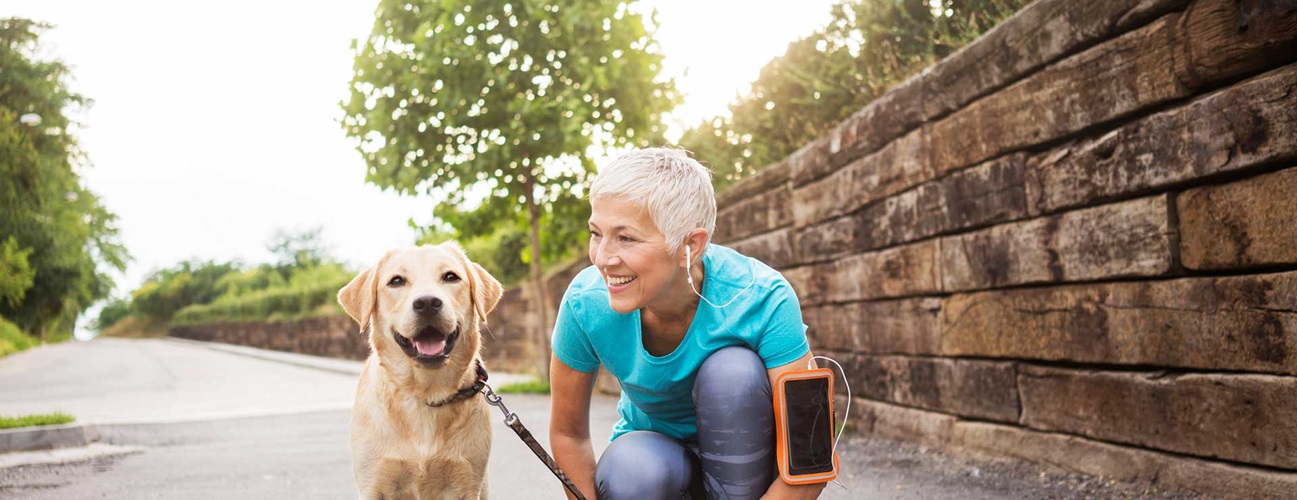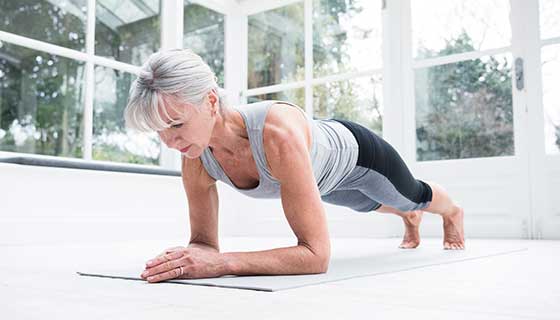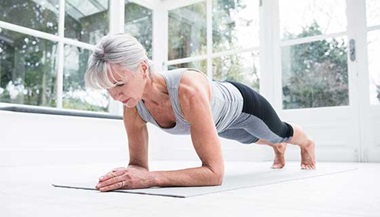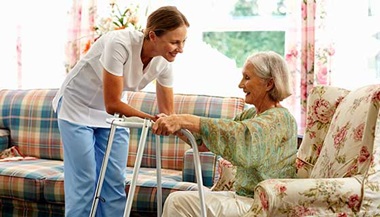Fitness Tips for 50-Plus
One of the most important reasons to exercise at 50-plus is to keep your weight in check. By maintaining a healthy weight, you lower your blood pressure and decrease your risk of heart disease, diabetes and arthritis.
Inspired to break a sweat? Before you grab your water bottle and gear bag, keep these six fitness tips in mind.
DOs
- Strength train.
Muscular strength declines with age, so strength training is key for maintaining strength and preventing muscle atrophy at 50-plus. Strength training has also been shown to help with bone density,and which decreases the rate of bone breakdown, helping reduce the risk of fractures later in life. - Get an exercise partner.
If you work out with a friend or your spouse, you generally tend to exercise more regularly because you have that person to coax you.Even owning a dog will get you out and walking. - Stretch regularly.
As our bodies age, our tendons get thicker and less elastic. Stretching can counter this and help prevent injury at 50-plus. Remember to stretch slowly; do not force it by bouncing.
DON’Ts
- Start exercising without your doctor’s blessing.
Consult your health care provider if you have underlying health risks such as a cardiovascular, metabolic or renal disease. Inactive individuals who are healthy do not need an evaluation but are recommended to start slow and progress gradually. If you have any concerns or are unsure how to start, consult your physician. - Sign up for an expensive gym.
If you’re on a budget, you can get plenty of exercise at home. Great fitness tips: Moderate time spent walking, gardening and even vacuuming all count as exercise. A modest investment in dumbbells and exercise bands will also allow you to do strength training at home. - Focus on cardio only.
While cardiovascular exercise is important, so is stretching and strength training (see the “Dos” for details) as well as core strength and balance exercises. Tai chi, Pilates and certain kinds of yoga can enhance balance and core strength at 50-plus, which will help support and protect your spine and may help prevent a future fall.
Try It Sit Less, Move More
Knowing you should exercise more can feel daunting, especially when you’re just starting out. Some people don’t feel they can fit in the full amount of physical activity their doctor recommends—and they give up on moving altogether. But those recommendations are just guidelines. It doesn’t have to be all or nothing. Try to focus on being less sedentary rather than more active. For example, you do not have to reach the goal of 10,000 steps per day in a week, but this could be the goal to reach over two to three months.
Research shows that sitting still for long periods of time can cancel out the effects of 30 minutes of exercise. There is evidence that being too sedentary, such as prolonged time in front of a TV, is perhaps as harmful to your heart health as not exercising at all. Prolonged inactivity is linked to obesity and diabetes, even in people who are active for part of the day.
Yes, daily exercise is important, but so is regularly getting up and just moving around throughout the day.






